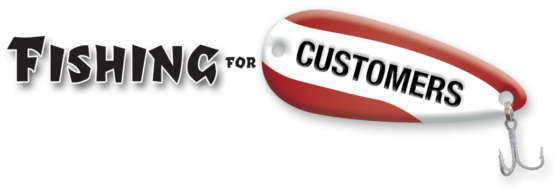Phineas Taylor Barnum’s most enduring quote is “There’s a sucker born every minute.” I suspect he was right. But then, Barnum never expected to see the same customer twice.
Hucksterism can create a sale, but it can’t create a market.
Advertising can’t create a market, either, because advertising can’t convince people to purchase something that they don’t already feel the urge to own.
Whether or not they are yet conscious of this urge, customers must feel the need to own the product or service, or nothing happens. I was watching TV with my sister when an ad for the Clorox® Bleach Pen® came on. “I need that” was her comment. She instantly knew that he “needed” a product which (in her mind) didn’t exist 30 seconds ago. Although she’d never articulated it, she’d already felt the need.
This has a couple of obvious implications. For instance, you can’t “test” advertising effectiveness by featuring items in your ads that aren’t selling on your sales floor. (Think about it: if your regular customers are passing on those items, telling more people about them isn’t going to move ‘em any faster).
Also, shouting “We will not be undersold. Call me NOW!” doesn’t make people want whatever you’ve got any more than they wanted it before being exposed to your shouting.
Advertising does not create demand. It can only direct people who already feel that need to buy from you rather than from someone else. My sister already felt the need to apply bleach to a tightly-controlled area. Once the ad brought her attention to the product, she purchased one within hours.
Example #1: Refrigerators
When refrigerators were new they were obviously superior to the old ice boxes. The first generation of these devices sold by satisfying the need people already felt to make their lives easier.
Unfortunately for retailers refrigerators are appliances which have an exceptionally long purchase cycles. Consumers don’t usually replace them until they break down.
We call such breakage a “triggering event.”
The trigger suddenly moves customers from “not interested” to “I need one… NOW.” (Probably the pressure of hundreds of dollars of food spoiling). Until the trigger they’re largely oblivious to the new models. Hold all of the tent sales that you want, only a very few people will have a broken ‘fridge today.
Note to appliance stores: since there is no possible way to predict when an appliance will break, make sure that customers think of you immediately after the trigger is pulled. Think Top-Of-Mind Awareness (long term; relational) advertising rather than Call To Action (short term; transactional) advertising.
Example #2: Feminine Hygiene Products.
During World War I personal toiletry supplies were nearly impossible to obtain at the front. Red Cross nurses in military hospitals started using the new cellular cotton bandages as sanitary napkins.
Until the 1920’s menstrual pads had been made of cloth and needed frequent laundering. But having learned of the nurses’ use of their product, Kimberly-Clark in 1921 started marketing a modified cellular bandage under the brand name, Kotex®.
Important point: although they created a whole new industry, Kimberly-Clark did not create demand. The demand for disposable sanitary napkins already existed. Since no one spoke of such things (Puritanism lives), the existing need hadn’t been articulated, or addressed by manufacturers.
Example #3: Remote Controls for Car Radios
Ever seen a remote control for an automobile radio? Most of the time the driver has to reach farther to pick up the remote than he would to reach the radio. Then he has to pull his arm back far enough to create the correct angle of application to allow the remote to function.
Does advertising sell these things?
Well, yes, but not to the general public. The general public does’t care. They don’t feel the need.
Car radio remotes are purchased by men (primarily) who haven’t outgrown the “Hey… lookit meeeee” stage. They felt the need to show off long before any manufacturer ever considered offering a new technological toy.
You can sucker someone to buy from you one time – if you’re particularly good at suckering. But without taking advantage of people, you can’t convince them to buy what they don’t want. And you’ll never convince them a second time.
Until they feel the need, they probably don’t want it.
Once they feel that need, we want them to think of you.

Interestingly enough, I had purchased a new stereo system for my car based on research of sound quality, price, and expandability. The unit I chose came with a remote which seemed a little silly to me. I assumed the remote was used in “Professional Audio” show cars that were customized for contests. The competitor could stand outside of the car and control the stereo. Interestingly enough, I found myself using the remote control, by accident, for quite another reason… I was able to change radio stations, CDs, volume, etc. without looking down and leaning toward the stereo unit. The remote allows me to drive safely while adjusting the stereo. I have also seen in certain luxury cars, remote control functions built into the steering wheel. I can’t say that a remote control is a feature that I would “need” in a future purchase, but if I were comparing two units, one with a remote and one without, it could be a deciding factor.
In Europe you can get a Renault Megane or a Renault Clio with remote control behind the steering wheels (you can control your car stereo with your fingers). These are NOT luxury cars.
McKay, read your claim that advertising can’t create a market. Would you please explain the Pet Rock? Surely there wasn’t a market for these before they were sold?